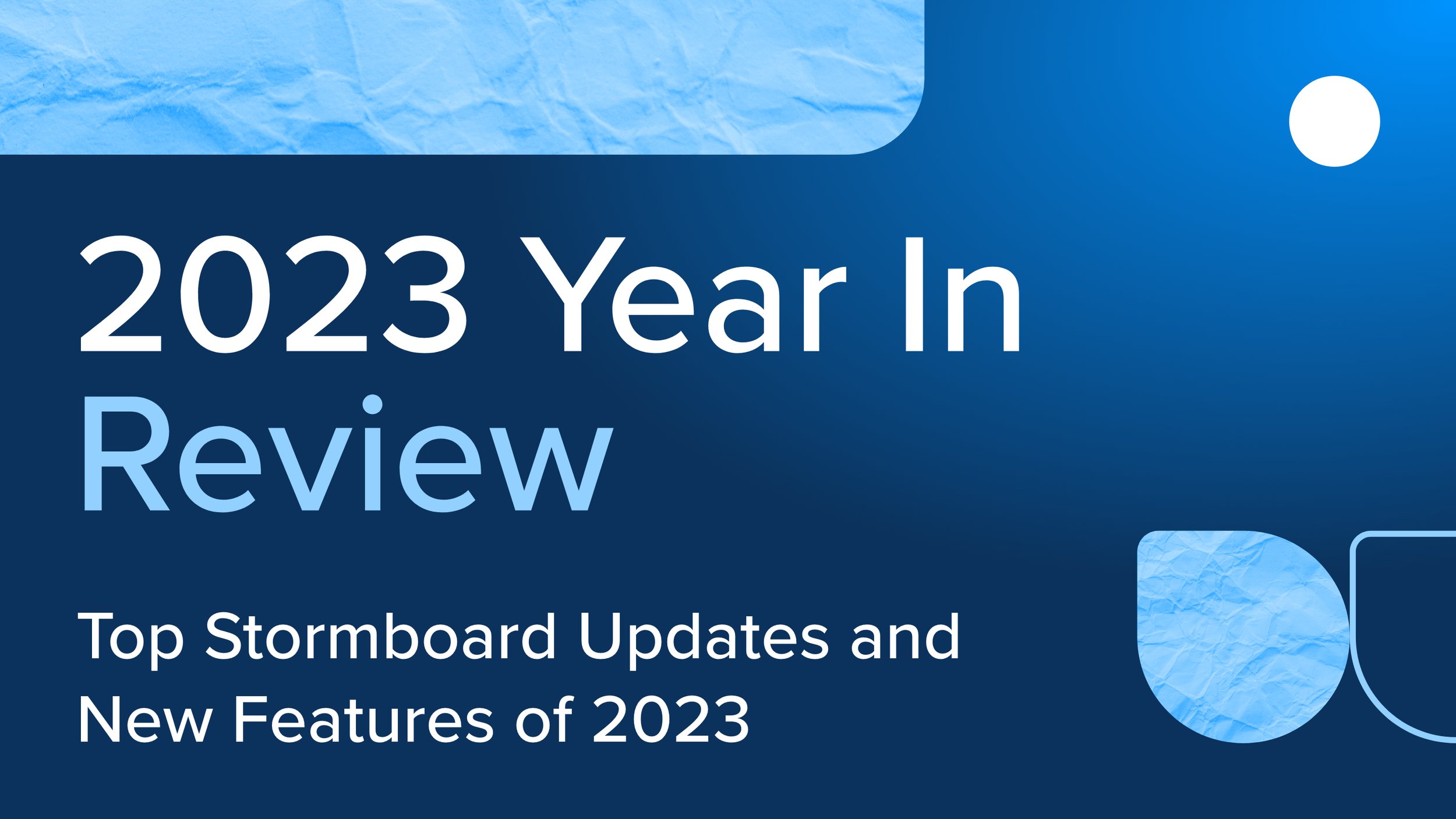How to Improve Corporate Goal Setting and Tracking
It’s difficult to know where you’re going if you don’t know where you came from. This is the basis for all goal setting and tracking, whether it be personal or professional.
Being aware of your team and what they are doing can be easy when your team only consists of, say, 10 people. But, on a larger team scale, corporate goal tracking can prove to be more difficult.
When you first implement goal tracking in a large company, the sheer amount of people that need to be accounted for can be overwhelming. In a 300 employee-plus Enterprise, no one person can possibly keep track of everyone’s progress and goals. That’s where collaboration tools and applications (like Stormboard) can help you streamline this process and keep track of where you have been, where you are going, and where you want to be.
Getting Started: Setting Your Goals
In order to track goals, you need to create them! The best way to create new goals that will propel your company forward is to review where you are at, what the market looks like, and how you align with the competition.
Remember that goals can change during the planning process. Be mindful of things that can or will change and be sure to note them as they come up. Allowing your goals to be flexible, accessible, and easily trackable will give your team room to breathe.
The following section will provide you with the tools that you need in order to set weekly, monthly, quarterly, annual, and future goals for your team.
Perform Benchmarking Research
Perform internal benchmarking research of your company goals from the previous year (or even a few years back).
What goals did you complete? Did you reach your sales target? What was the customer retention rate? From that research, you have a starting point for your current-year goals.
“Internal benchmarking involves looking inwards which simply means that company attempts to learn from their own structure. They compare similar operations within the organisation which could be defined and measured.” (source)
Alternatively, you can use competitive benchmarking — research the competition to see what they offer that you may not. What makes your company unique? What can you offer that they can’t?
Research Your Market
In order to identify your customers and stay on top of changes in your marketplace, you will need to perform market research.
“Market research aims to understand the reasons consumers will buy your product. It studies such things as consumer behavior, including how cultural, societal and personal factors influence that behavior.” (source)
There are two types of market research — primary and secondary.
Primary research involves talking directly to customers whether through polls, your sales, over the phone, etc. Secondary research includes information that others have gathered through their own reports and studies that relate to your customers.
Questions to ask while performing this research include:
Who are our customers?
What do they buy?
Why do they buy?
What will make them buy from us?
Click here for a guide to performing market research.
Perform a SWOT Analysis
A SWOT analysis is exactly what you need to do in order to organize your company’s greatest strengths, weaknesses, opportunities, and threats. The point of this type of analysis is to help you develop a strong business strategy and set key goals.
Gather a group of people with different perspectives from your company — this type of analysis works best with a group that has varied insights — and hold a brainstorming session so everyone can contribute ideas to the SWOT template.
Once your brainstorm is done, create a final version of your SWOT and list the factors in each section from the most important to the least.
Think of Strengths and Weaknesses as internal influences that can be changed or controlled by you and your team, and Opportunities and Threats as external influences from the greater market.
Find a complete guide to performing a SWOT Analysis here.
Next Steps: Tracking Your Goals
Once you have set your weekly, monthly, quarterly, annual, and future goals, you need to keep track of them. Here are a few points to keep in mind:
Ensure your goals are easy to see by everyone on your team
It may seem simple, but keeping your corporate goals in high-traffic or easy-to-access areas keeps them top of mind. This ensures that every decision that is made by your employees is aligned with the company’s overall goals.Implement progress markers
These markers acknowledge work that needs to be done in order to achieve the goal. It ensures all team members can see what has been accomplished and can also help you to see where or what may cause progress to stall.Celebrate victories
As progress markers and goals are met, celebrate the work that has been accomplished to keep everyone motivated to move forward.
How Stormboard Can Help You Set and Track Your Corporate Goals
Stormboard’s Goal Tracking Templates are set up so you can set and track all of your short and long-term goals. The templates can also be added to, or customized, to suit the needs of your Enterprise.
There are three templates currently available specific to goal setting, but there are also multiple templates — calendars, business plan, brainstorming, and more — that could also be used to set and track your goals.
Short-Term and Long-Term Goals Template
The template is divided into four sections that allow you to set short-term goals, mid-range goals, long-term goals, and very long-range goals.Quarterly/Monthly Goal Setting Template
The framework is set up to cover a full calendar year, with spaces for quarterly goals laid out across the top of the template, and columns for each month labeled at the bottom of the template.Annual, Quarterly, Monthly Overview Template
The framework is set up to give you a quick and concise overview of the goals that have been set for your company for the entire year.
With Stormboard you can use bright colored sticky notes to prioritize goals, or even color-code them using the built-in color legend. Your team will also be sent notifications every time something is updated, keeping them in the loop when progress is made, or goals are accomplished.
These Storms (what we call the digital workspace and template within it) can also be easily shared with remote offices, shareholders, clients, etc., to keep them up-to-date on progress.
Get Started!
Are you interested in making your corporate goal planning and tracking more streamlined and effective? Click here to learn more about our Enterprise plans, or sign-up for a FREE trial!










